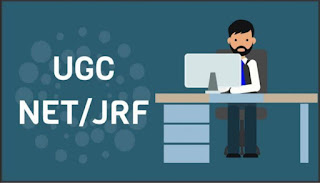ECONOMICS COST FUNCTION
Describe Cost Function, Also Mention the Concept of Cost
Cost functions are derived functions. They are derived from the production function. They are
derived from the production function, which describes the an actable efficient methods of
production at any one time. Short run costs are the cost over a period during which some of
production factors (usually capital, equipment and management) are fixed The long run term
costs are the costs over a period long enough to permit the change of all factors of production. In
long run, all factors become variable. Both in short run and in long run, total cost is multivariate
function. That is total cost is determined by many factors. Symbolically we may write the long-
run function as C = f (X, T, K)
And short run cost function as C = f (X, T, K) Where
C = Total Cost
X = output
T = technology
K = Price Of Factors = Fixed Factors (S)
Cost is the function of output c = f (X)
Concepts of Costs
There are many types of concepts where coats are concerned
Money Cost: Cost is not unique concepts on the contrary there are various types of costs. The
most accepted is the money value or the money cost of production which means the total
money involved in production of a commodity. For example money spends on rent,
machinery interests'salary of the employee etc, from a producer's point of view this is the
most important cost concept.
Opportunity Cost: This is a very important concept in modern economic analysis. We can
understand this concept best by an example say if a person goes to market he has many
things to buy he can buy a watch or a book or a T. V anything for that matter he will choose
one out of all the items. The cost of foregoing the other items in known as opportunity cost.
We could say that the alternative or opportunity cost of any factor in the production of a
particular commodity is the maximum amount which the factor could have cared in some
alternative use.
Real Cost: According to marshall, the real cost of production of a commodity express not in
terms of money but in efforts and the scarifies undergone in the making of a commodity.
Money is paid to factors of production to compensate them for their effort and sacrifice.
Weather this money is adequate or not is entirely a different question the main difficulty with
this concept is that is purely subjective and psychological.
Accounting Cost And Ecnomic Costs: Accounting cost is also know as explicit costs or
expenditure cost. We can say that these costs are contractual payments which are paid to the
factors of production which do not belong to the employer himself. For example payments
made for raw materials, power, light, and wages. Economical costs are also known as implicit
costs or non-expenditure costs. This arises in the case of those factors which are possessed
and supplies by the employer himself. For example, an employer may contribute his own
land, his own capital and may work as the manager of the firm. So he is entitled to Interest
and salary for himself.
Fixed Costs And Variable Costs: Variable cost refers to those factors which are variable in
short run. Theses costs naturally vary with the changes in the level of output of the firm,
increasing with an increase and diminishing with decrease in the output. For example if
affirm plans to increase the number of labour it will have to increase the expenditure of the
salary of the workers. They are direct costs because all the units produced by the firm depend
directly upon them. Fixed costs are those costs which cannot be increased in short-run even if
the employer wishes to do so. They are called fixed costs because they do not change with
every change in output, for e. g. If the output is doubled the rent of the land where the firm is
operating will not change. It is important for a firm to cover the variable costs
Joint Stock Company
IT is also know as association of individuals knows as shareholders who are authorized by the
government to run a particular business. This system has become a popular type of business
organization large scale commercial and industrial enterprise and generally run under the stock
company system. The capital of the firm is contributed by large number of shares holders, who
are the real owner of the business firm. The policy making job of the firm is entrusted to aboard
of directors who are elected among the shareholders. The joint stock company invariably carries
on production on a large scale. Consquentis, all the economics of large scale production accure
to it which finally result in cutting down its production costs The board of members simply lays
down the general policy of the company. But the actual implementation of the policy is left to
the well trained and highly paid specialists. Compare to partnership, join stock can raise capital
on much larger scale, by selling shares of various types it can raise adequate capital to meet its
own requirement. The share of the joint stock company can be easily bought and sold on the
stock exchange. If any shareholders are not satisfied with the working, he can get out of the
company by selling his shares But there are some demerits due to delays in decision, lack of
interest in company matters, difficulty of establishment.
Isoquants
Isoquants are a geometric representation of the production function. The same level of output
can be produced by various combinations of factor inputs. Assuming continues variation in the
possible combination of labour and capital, we can draw a curve by plotting all these
alternatives combinations for a given level of output. This curve which is the locus of all possible
combinations is called isoquants or iso-product curve.
Properties of Isoquants
Each isoquants correspondence to a specific level of output and shows different ways of
technological efficiency, for producing that quantity of output. 2. The isoquants are downward
sloping and convex to the origin. The slope of isoquants is significant because it indicates the
rate at which factors K and L (where L is labour, K is capital) can be substituted for each other
while a constant level of output is maintained. 3. Two isoquants do not interest each other as it
is not possible to have two output levels for a particular inputs combination. ISOQUANT MAP Q
= production function K = capital L = labour Q = f (K, L)
For a given value of Q, alternative combination of K and L can be possible because labour and
capital are substitute to each other to some extent. The alternative combination of factors for a
given output level will be such that if the use of one factor input is increased, the use of another
factor decreases, and vice versa.
Keynes Liquidity Preference Theory
According to Keynes, money is the perfect liquid asset. The main motives which impel an
individual or business firm to demand money or hold liquid assets are transaction motive,
precautionary motive and speculative motive.
Transaction motive: A substantial amount of money is required by the community for
carrying out day to day transactions.
Precautionary motive: Most of the spending units hold some of cash in excess of the
minimum required to meet the day to day transactions. This surplus amount is held in part to
deal with emergencies unforeseen contingencies like illness, accidents, unemployment and
any other economic misfortune or to take advantage of bargains when the goods can possible
be purchased on attractive terms with pavements, made in terms of cash.
Speculative motive: The speculative motive for the holding of money relates to the taking
advantage of future market movements. It involves holding of money balances with the
objective of securing profit from knowing better than market what the future will bring forth.
The relationship between liquidity preference and the rate of interest is inverse. The liquidity is
maximum when the rate of interest is zero because the individual will not lose anything even if
they keep all their money in liquid form. As the rate of interest increases, people will prefer to
hold less and less amount of money as liquid cash.
Long Run Costs
In the ling run cost managers have enough time to change the scale or size of the production
unit. There are no fixed factors in long-run. If suppose there is increases in The demand for the
product, there is time to increase the production of the firm. In long run every thing is variable
including management, labour or be it machinery, when the scale of operation is changed, we
need to draw new short run curve of the firm, because the old cost curve becomes outdated due
to change in the scale of operations. Now I m going to explain on long run average cost curve
(LAC) LAC is the sum of various short run cost curves depicting different production plan A at
different time periods. Let's understand the long run average cost. Lets assume three different
short term average cost curve (SAC), lets denote them by SAC1, SAC2, and SAC3. There are
three minimum points e1, e2, e3. Firm always selects the minimum points of the SAC, because
at this point it incurs the least cost. The LRAC curve to the short-run average cost curve.
The LAC is flatter than SAC, it also known as envelope curve. The firm will choose the point e2
because it is ideal point of production. At e1 the cost of production is still decreasing in long run
and at e3 the cost of production increases which means that output is less than the cost beard by
the firm (d). OLIGOPOLY AND ITS MAIN FEATURES: Oligopoly means competition among
the few. There is no limit between few and many but generally when numbers of seller are
between two to ten. In an oligopolistic market there are a small number of firms, so that sellers
are conscious of their interdependence. Thus each firm must take into account the rivals
reactions. The competition is not perfect, yet the rivalry among firms in high unless they make
collusive agreement. The seller must guess the rivals reactions. Their decision depends upon on
the ease of entry and time lag, which they forecasts to intervene between own action and the
rival's reactions. We can broadly divide oligopology into 2 parts collusive and non collusive
oligopology. Collusive is the one which the producers come together and determine a fixed price
or output or share of the market etc. Non collusive oligopology is the one which the competition
applies own managerial skills to capture the market and is always alert of what the rival
producer is planning
The Main Features
Interdependence: The producers are interdependence on each other for decision making.
This is because the numbers of competitors are few so any change in price, output, product
etc. By firms can have some effect on the other producer
Importance of advertising and selling cost: To occupy the bigger share of market the
producer plans a layout for advertising. For this various firms have to incur a good deal of
costs on advertising.
Group behaviors: In this type of market the producers come together to take decisions in
every members common interest.





